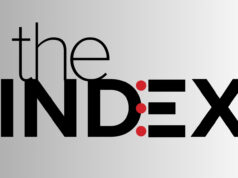Over the last decade, healthcare providers have spent billions of dollars to digitize medical records. Patients, apparently, are being left out of the loop.
Only about one-fifth, or 19%, of consumers who asked for records said they were always able to view all their records in a digital format, according to an online survey by healthcare technology company DrFirst. The survey gathered responses from 200 pre-selected people who had requested medical records from a doctor or hospital either for themselves or for a family member.
The remaining 81% said they received records in a combination of digital and paper formats, while 41% of those surveyed said they were not always successful in getting all the records they had requested.
“‘Consumer-driven healthcare’ is an oxymoron when patients lack access to the information that would allow informed choice,” G. Cameron Deemer, president of DrFirst, wrote in an emailed response to questions forwarded by a company spokesperson.
But just as the federal government has pushed healthcare providers to be more transparent on pricing, regulators are also driving greater access to records, Deemer wrote.
“Apart from this top-down motivation, though, access to records satisfies a real patient need, and I believe providers intrinsically want to remove barriers to patients benefiting from therapies,” Deemer wrote. “There are also clear benefits to both providers and payers when patients are better able to provide information on care they have received or are receiving that’s unknown to the current provider.”
Web portals, though widely adopted in healthcare, are not a popular format for patients to gain access to their records, according to the DrFirst survey. About a third of the consumers surveyed have never used a portal, citing a variety of reasons: 37% did not know how; 18% did not have time; and 14% found the process to confusing. The remaining 31% approached providers that did not have portals.
“Access to healthcare in general has been one of the, if not the top, challenges for patients who are accustomed to the convenience and ease of interacting with other businesses in their lives,” Adnan Iqbal, CEO and co-founder of Luma Health, wrote in an email.
Based in San Francisco, Luma Health offers a platform for healthcare providers to communicate with patients via text, a method that many patients prefer, even seniors, according to a company survey released in January. The survey found that 46% of patients aged 55 to 74 responded to text requests for feedback, compared to 27% of patients aged 18 to 34.
When it comes to accessing patient records, solutions need to be easy to use while protecting privacy, Deemer said. Efforts to free up information should yield benefits, he added.
“Think about the simple step of filling out the clipboard information when you are seeing a doctor for the first time. It’s important for your new doctor to receive accurate and complete information on those forms, and where will the patient get that information without access to their records?” Deemer wrote. “For payers, it’s simple: informed care equals better care equals improved cost of care. Efficiently managing costs requires informed patients.”
Of the survey’s 200 respondents, 44% were male and 56% were female, according to DrFirst, which is based in Rockville, Maryland. About a quarter, 26.5% were over 54. Another quarter, 0r 26%, were between 25 and 34. Another 21.5% were between 35 and 44.
Photo: pandpstock001, Getty Images








